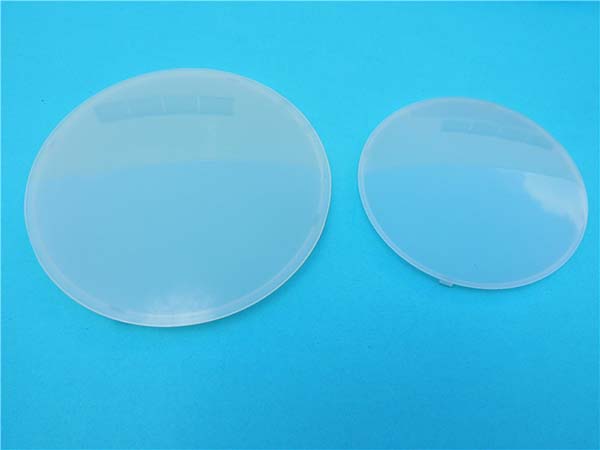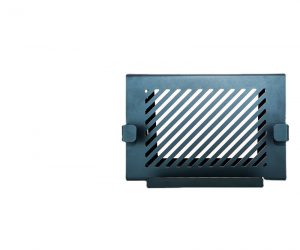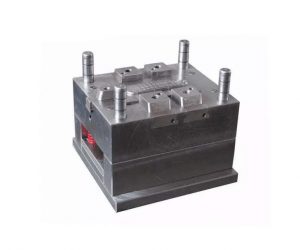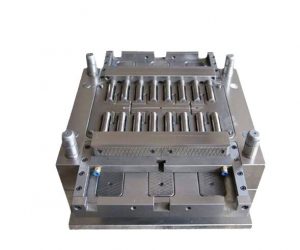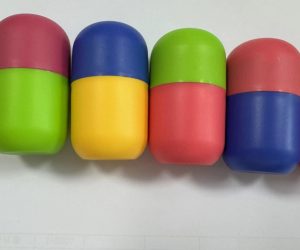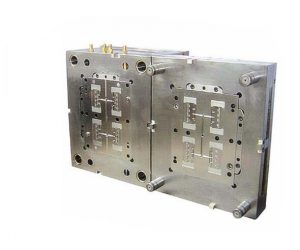What is 3D Printing Fabrication?
3D printing fabrication, also known as additive manufacturing, is a revolutionary technology that creates three - dimensional objects from a digital model. Unlike traditional manufacturing methods, which often involve subtractive processes (such as cutting, milling, or drilling away materials from a larger block), 3D printing builds objects layer by layer.
The process begins with a 3D model, which can be created using computer - aided design (CAD) software, 3D scanning, or even downloaded from online repositories. This digital model is then sliced into thin cross - sectional layers by specialized software. The 3D printer reads these sliced files and deposits materials, such as plastic, metal, ceramic, or even biological materials, in precise patterns to gradually build up the object.
For example, in a fused deposition modeling (FDM) 3D printer, a spool of thermoplastic filament is melted and extruded through a nozzle. The nozzle moves in the X, Y, and Z axes according to the instructions from the sliced file, depositing the melted plastic layer by layer. Once the printing is complete, the object may require some post - processing, such as removing support structures (which are used to hold up overhanging parts during printing) and sanding or polishing for a smoother finish.
Here is a simple comparison between 3D printing fabrication and traditional manufacturing methods:
| Aspect | 3D Printing Fabrication | Traditional Manufacturing |
| Material Waste | Low, as material is added only where needed | High, especially in subtractive processes |
| Complexity of Design | Can create highly complex geometries with ease | Complex designs may be difficult and costly to produce |
| Production Volume | Ideal for small - batch production and custom - made items | More cost - effective for high - volume production |
| Tooling Requirements | Minimal, as there is no need for custom molds or dies for each design | Often requires expensive tooling for mass production |
How Does 3D Printing Fabrication Work?
The 3D printing fabrication process involves several key steps, each crucial for creating a high - quality final product.
Step 1: Design Creation
The first step in 3D printing fabrication is to create a 3D model. This can be done in two main ways: using CAD (Computer - Aided Design) software or 3D scanning.
CAD software is widely used by designers and engineers. Popular CAD software options include AutoCAD, SolidWorks, and Blender. For example, AutoCAD offers a vast array of tools for creating 2D and 3D designs with high precision. When using CAD software, designers need to consider factors such as the object's size, shape, and internal structure. A mechanical engineer designing a custom - made engine part would carefully define the dimensions, tolerances, and material properties in the CAD model.
3D scanning, on the other hand, is a great option when you want to replicate an existing physical object. 3D scanners use technologies like laser scanning or structured - light scanning to capture the shape of an object. Archaeologists might use 3D scanning to create digital replicas of ancient artifacts for research and preservation purposes.
Step 2: Slicing the Model
Once the 3D model is ready, it needs to be sliced into thin layers. This is where slicing software comes in. Programs like Cura, Slic3r, and BCN3D Cura are commonly used.
The slicing software takes the 3D model (usually in a format like STL or OBJ) and divides it into multiple horizontal slices. The thickness of each slice, known as the layer height, is a crucial parameter. A smaller layer height will result in a smoother surface finish but will also increase the printing time. For example, a layer height of 0.1 mm will produce a much finer - detailed print compared to 0.3 mm.
The slicing software also determines other printing parameters such as the printing speed, the amount of infill (the internal structure of the object), and the placement of support structures. Support structures are necessary for parts of the object that have overhangs or are not self - supporting during the printing process.
Step 3: Printing Process
After slicing, the 3D printer is ready to start the printing process. Different types of 3D printers use various technologies, but the most common is Fused Deposition Modeling (FDM). In an FDM 3D printer, a spool of thermoplastic filament (such as PLA or ABS) is fed into an extruder. The extruder heats the filament to its melting point and then extrudes it through a nozzle.
The nozzle moves in the X, Y, and Z axes according to the instructions from the sliced file. As it moves, it deposits the melted plastic layer by layer on the print bed. Each layer bonds with the previous one, gradually building up the 3D object.
[Insert a product picture here showing an FDM 3D printer in the process of printing, with the nozzle extruding filament and the layers being built up]
For example, if you are printing a small figurine, the printer will start with the base layer, depositing the plastic in the shape of the base. Then it will move up to create the next layer, and so on, until the entire figurine is completed.
Step 4: Post - Processing
Once the printing is finished, the object often requires post - processing. This step is crucial for achieving the desired appearance and functionality of the final product.
One common post - processing task is removing the support structures. These were added during the slicing process to hold up overhanging parts, but they are no longer needed. They can be removed by hand, using tools like pliers or a utility knife, or in some cases, by dissolving them in a chemical bath.
Sanding is another post - processing technique. It helps to smooth out the rough surfaces left by the layer - by - layer printing process. For a more polished look, the object can be polished, which can involve using abrasive compounds and buffing wheels.
If color is desired, the 3D - printed object can be painted. Specialized 3D - printing paints are available that adhere well to the printed materials. This post - processing can transform a plain - looking 3D - printed object into a high - quality, professional - looking product.
Applications of 3D Printing Fabrication in Different Industries
3D printing fabrication has found its way into numerous industries, revolutionizing the way products are designed, prototyped, and manufactured. Here are some of the key industries where 3D printing is making a significant impact.
Healthcare
In the healthcare industry, 3D printing has a wide range of applications. One of the most notable is the creation of customized prosthetics. For example, a patient who has lost a limb can receive a 3D - printed prosthetic that is tailored to their unique limb shape and movement needs. This results in a more comfortable fit and better functionality compared to traditional, off - the - shelf prosthetics.
3D printing is also used in dentistry. Dental professionals can create accurate models of teeth for crowns, bridges, and orthodontic treatments. These models are made from digital impressions of the patient's teeth, providing a precise fit. Additionally, 3D - printed surgical guides are used to assist surgeons during complex procedures. For instance, in a craniofacial surgery, a 3D - printed surgical guide can help the surgeon accurately place implants or perform bone reconstruction, reducing the risk of errors.
Bioprinting, another aspect of 3D printing in healthcare, is an emerging field with great potential. Scientists are using 3D printers to create tissue and organ models. Although fully functional 3D - printed organs for transplantation are still in the experimental stage, the ability to print organ models has already been a game - changer for medical research and drug testing. These models can mimic the structure and function of real organs, allowing researchers to study diseases and test new drugs in a more realistic environment.
Aerospace
The aerospace industry has embraced 3D printing for its ability to create lightweight yet strong components. Aircraft and spacecraft require parts that can withstand extreme conditions while minimizing weight to improve fuel efficiency.
3D printing enables the production of complex geometries that are difficult or impossible to achieve with traditional manufacturing methods. For example, engine components such as turbine blades can be 3D - printed with internal cooling channels designed to optimize performance. These channels can be precisely engineered to improve heat dissipation, which in turn enhances the engine's efficiency and reliability.
Companies like Airbus and Boeing are already using 3D - printed parts in their aircraft. Airbus has 3D - printed components for its A350 XWB, including parts for the aircraft's wing and fuselage. These 3D - printed parts not only reduce the weight of the aircraft but also lower production costs and shorten the supply chain. In space exploration, NASA has been experimenting with 3D printing for on - demand manufacturing of parts in space. This could potentially eliminate the need to carry large inventories of spare parts on long - duration space missions, saving both weight and cost.
Automotive
The automotive industry has also benefited greatly from 3D printing. Car manufacturers use 3D printing for rapid prototyping of new vehicle designs. Instead of spending months creating prototypes using traditional methods, they can now produce them in a matter of days or weeks with 3D printing. This allows for faster design iterations and reduces the time it takes to bring a new vehicle to market.
3D printing is also used for manufacturing small - batch production parts and customized components. For example, high - end sports cars or limited - edition vehicles may have unique parts that are 3D - printed to meet specific design and performance requirements. Interior components such as dashboard inserts, seat - back panels, and even custom - designed air vents can be 3D - printed to add a personalized touch to the vehicle. Some companies are even exploring the possibility of 3D - printing entire car bodies, which could lead to more flexible and cost - effective manufacturing processes in the future.
Architecture
Architects are using 3D printing to bring their creative visions to life more efficiently. 3D - printed building models are much more detailed and accurate compared to traditional hand - made models. These models can be created quickly and can show the exact shape, size, and even the internal structure of a building design. This helps architects to communicate their ideas better to clients, contractors, and other stakeholders.
In addition to models, 3D printing is being used for direct construction. There are already examples of 3D - printed buildings around the world. These buildings are constructed by large - scale 3D printers that deposit layers of construction materials, such as concrete or composite materials. 3D - printed buildings can have unique and complex shapes that are difficult to achieve with traditional construction methods. They also have the potential to reduce material waste and construction time. For example, in some 3D - printed housing projects, the construction time has been significantly reduced compared to traditional building methods, making housing more affordable and accessible.
Yigu Technology's View
As a non - standard plastic and metal products custom supplier, Yigu Technology has witnessed the transformative power of 3D printing fabrication. This technology has revolutionized the manufacturing process, especially for complex - shaped components. In the production of non - standard parts, 3D printing allows us to create intricate geometries that were once extremely difficult and costly to produce with traditional methods. For small - batch production, 3D printing significantly reduces costs and lead times, as it eliminates the need for expensive molds and tooling.
However, we also recognize the challenges. The high cost of 3D printing equipment and materials, as well as the relatively slow printing speed, still limit its wider application. But we are optimistic about the future. With continuous technological advancements, we expect to see breakthroughs in reducing costs, improving printing speed, and expanding material options, which will further unlock the potential of 3D printing fabrication.
FAQ
Q1: What materials can be used for 3D printing fabrication?
Common materials for 3D printing include polymer materials like ABS (acrylonitrile - butadiene - styrene) which is strong and heat - resistant, often used in industrial applications, and PLA (polylactic acid) which is biodegradable and popular in home and educational printing. Metal materials such as aluminum alloy, known for its lightweight and corrosion - resistant properties, suitable for automotive and aerospace parts; and titanium alloy, with high strength and corrosion resistance, used in high - end applications like medical implants and aircraft components. Photocurable resin materials are great for high - precision and detailed prints, especially in jewelry and dental model making. Inorganic non - metallic materials like ceramic, which can be used to create artistic and heat - resistant products, and gypsum, often used for creating molds and prototypes. There are also biocompatible materials used in medical applications, such as materials for 3D - printed prosthetics and tissue engineering.
Q2: How accurate is 3D printing?
The accuracy of 3D printing is affected by multiple factors. Different 3D printing technologies and equipment have different levels of accuracy. Generally, the accuracy ranges from tens of micrometers to several millimeters. For instance, in fused deposition modeling (FDM), a common desktop 3D printing technology, the accuracy is usually around ±0.1 - 0.5mm. Stereolithography (SLA) can achieve higher accuracy, often up to ±0.05mm. In applications like jewelry making or dental crown production, high accuracy (such as within ±0.1mm) is crucial to ensure a perfect fit and fine details. For large - scale architectural models or some industrial prototypes, an accuracy of a few millimeters may be acceptable.
Q3: Can 3D printing be used for mass production?
Currently, 3D printing faces some challenges in mass production. The cost of 3D printing equipment and materials, as well as the relatively slow printing speed, limit its large - scale application in mass production. However, in some specific fields and for certain products, 3D printing is gradually being used for small - batch production. For example, in the production of high - end customized automotive parts or some aerospace components with complex geometries, 3D printing can provide efficient manufacturing solutions. With the continuous development of technology, the cost of 3D printing is expected to decrease, and the printing speed will increase, which may enable more widespread use in mass production in the future.
